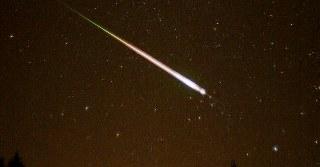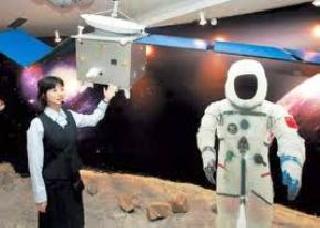
A file photo.
NEW DELHI (PTI): A celestial phenomena awaits sky gazers in the New Year as a meteor shower is expected to put up a sparkling show in the night sky on Monday.
Quadrantids, one of the best but least-known meteor showers, will be seen Monday zipping across the night sky theatre, retired Prof R C Kapoor of Indian Institute of Astro Physics told PTI.
The shower is active and consistent and famous for producing bright meteors - the fireballs. The meteors are medium speed, at about 43 km/sec, beginning and ending at heights between 100-90 km.
The Quadrantids are an annual shower that occurs between January 1 and 10, Space Popularisation Association of Communicators and Educators (SPACE), an NGO, Director CB Devgun said, adding the shower will peak Monday and on January 4.
It is an above average shower, with up to 40 meteors per hour at their peak, he said.
On an average, under clear skies, observers should see 40 to 60 meteors per hour but often these rates can exceed up to 120 meteors per hour, he said, adding in the best conditions, the Quadrantids meteor shower should put on a spectacular viewing experience.
Best viewing will be from a dark location after midnight, Devgun said.
This year, a New Moon will help viewing the phenomenon, he said, adding even small meteors may be seen.
The meteor has got its name from Quadrans Muralis, a cluster that is now part of Bootes constellation.
The source of the Quadrantid meteor shower was unknown until December 2003 when Peter Jenniskens of the NASA Ames Research Centre found evidence that Quadrantid meteoroids come from 2003 EH1, an "asteroid" that is probably a piece of a comet that broke apart some 500 years ago.
Meteors are also called "shooting stars", startling streaks of light that suddenly appear in the sky when a dust particle from outer space evaporates high in the Earth's atmosphere. Also, Monday the earth will be at the nearest point to the sun.
The earth will be at Perihelion at a point 0.983 Astronomical Units from the sun, Devgun said. The word perihelion comes from the Greek words "peri" (meaning "near") and "helios" (meaning "sun").
All planets, comets and asteroids in our solar system have elliptical (non-circular) orbits. Thus, they all have a closest and a farthest point from the Sun: a perihelion and an aphelion, he said.
Earth comes closest to Sun every year around January 3.
It is farthest from the Sun every year around July 4.
 Previous Article
Previous Article Next Article
Next Article












The Indian Air Force, in its flight trials evaluation report submitted before the Defence Ministry l..
view articleAn insight into the Medium Multi-Role Combat Aircraft competition...
view articleSky enthusiasts can now spot the International Space Station (ISS) commanded by Indian-American astr..
view article